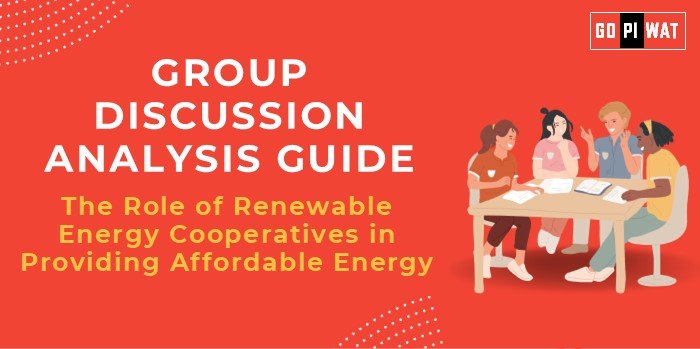📋 Group Discussion Analysis Guide
The Role of Renewable Energy Cooperatives in Providing Affordable Energy
🌐 Introduction to Renewable Energy Cooperatives
Renewable energy cooperatives are becoming vital in the global transition towards sustainable energy, especially in providing equitable access to affordable energy solutions. Their relevance is underscored by the global push to reduce carbon footprints and promote localized energy independence.
These cooperatives are community-based entities where members jointly own and operate renewable energy projects. Emerging in Europe during the 20th century, their global presence has expanded, addressing energy access issues in both developed and developing nations.
📊 Quick Facts and Key Statistics
- Global Renewable Energy Market: Valued at $881.7 billion in 2023, projected to grow at 8.4% CAGR (IEA, 2024).
- Europe: Over 1,500 renewable energy cooperatives are operating across the continent, showcasing local empowerment (REScoop.eu, 2023).
- Affordable Access: Cooperatives in Africa reduced energy costs by 40% for participating households (UNDP, 2023).
- India’s Potential: Only 20% of rural households have reliable energy access; cooperatives can bridge this gap (MNRE, 2024).
🔑 Stakeholders and Their Roles
- Governments: Provide regulatory frameworks and subsidies.
- Local Communities: Act as cooperative members and beneficiaries.
- Private Sector: Supplies technology and investment.
- NGOs and International Agencies: Offer technical support and funding.
🏆 Achievements and Challenges
Achievements
- Localized Energy Independence: Germany’s Schönau cooperative is a pioneer, serving 3,000 households with 100% renewable energy.
- Cost Reduction: Cooperatives reduce dependence on costly imports and centralized grids.
- Community Empowerment: Members actively participate in decision-making, fostering local development.
Challenges
- Funding and Investment: Many cooperatives struggle with capital acquisition.
- Policy Barriers: Regulatory restrictions often limit their scalability.
- Technical Expertise: Rural and underserved areas lack the necessary skills for operations.
🌍 Global Comparisons
- Success in Denmark: 70% of wind turbines are owned by cooperatives.
- Challenges in India: Lack of awareness and support frameworks inhibit growth.
🗂️ Structured Arguments for Discussion
- Supporting Stance: “Renewable energy cooperatives provide a scalable, sustainable solution to global energy inequality.”
- Opposing Stance: “High initial investments and regulatory hurdles make cooperatives less viable than centralized models.”
- Balanced Perspective: “While cooperatives address energy access, scalability and funding remain significant barriers.”
🎯 Effective Discussion Approaches
- Opening Approaches:
- “Renewable energy cooperatives redefine how communities access energy by prioritizing affordability and sustainability.”
- “With 1.2 billion people globally lacking reliable electricity, cooperatives offer a pathway to energy justice.”
- Counter-Argument Handling:
- Acknowledge funding challenges and propose solutions like public-private partnerships.
⚙️ Strategic Analysis of Strengths and Weaknesses
- Strengths: Community participation, renewable focus, localized benefits.
- Weaknesses: Capital constraints, limited awareness.
- Opportunities: Global net-zero goals, increasing green tech affordability.
- Threats: Policy resistance, competition from centralized systems.
💼 Connecting with B-School Applications
- Real-World Applications: Use cases in energy financing, sustainable operations, and public policy projects.
- Sample Interview Questions:
- “What role can cooperatives play in achieving net-zero emissions?”
- “How can public-private partnerships enhance cooperative success?”
- Insights for Students: Research opportunities in rural electrification, innovation in micro-grid technologies, and sustainable business models.


